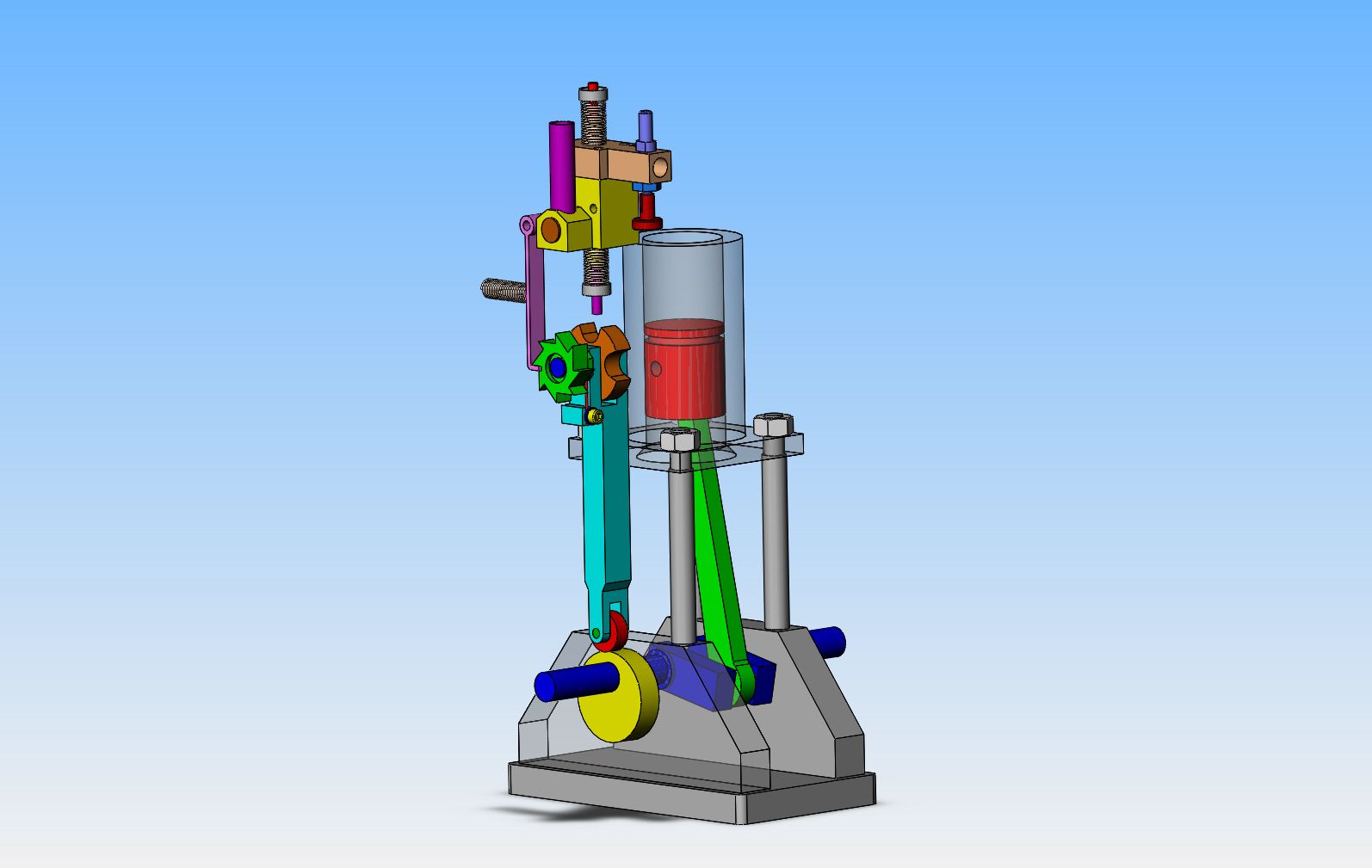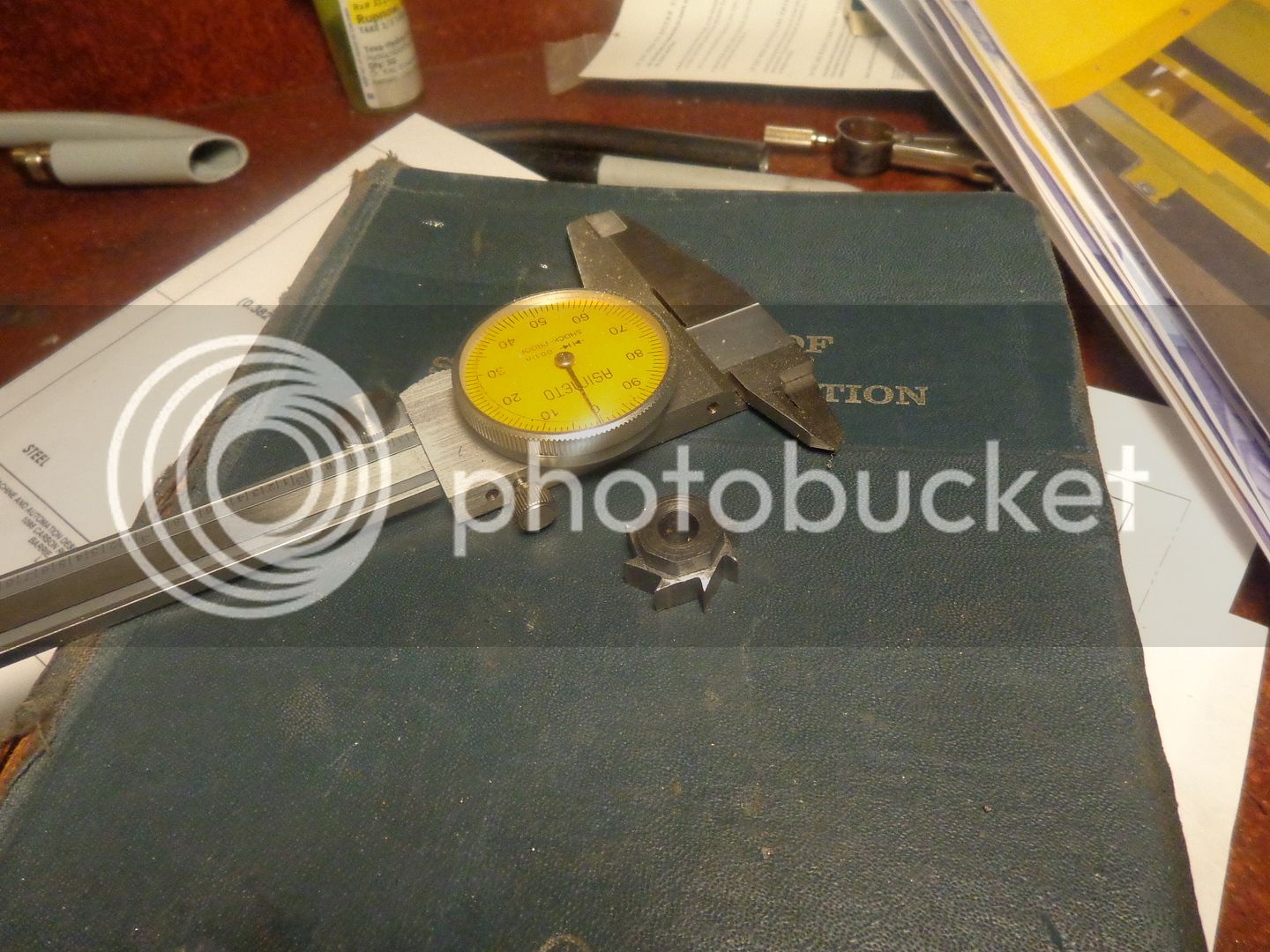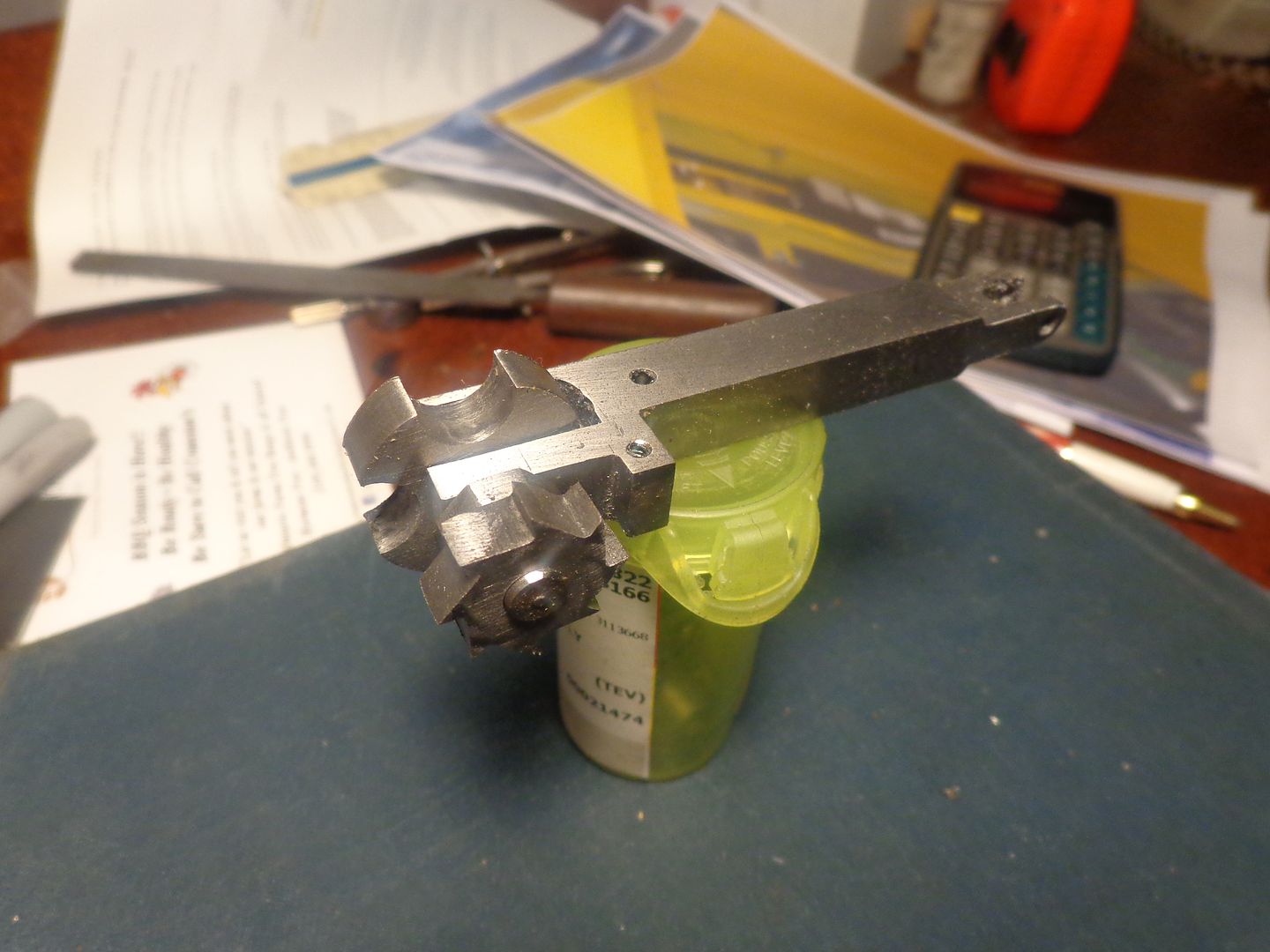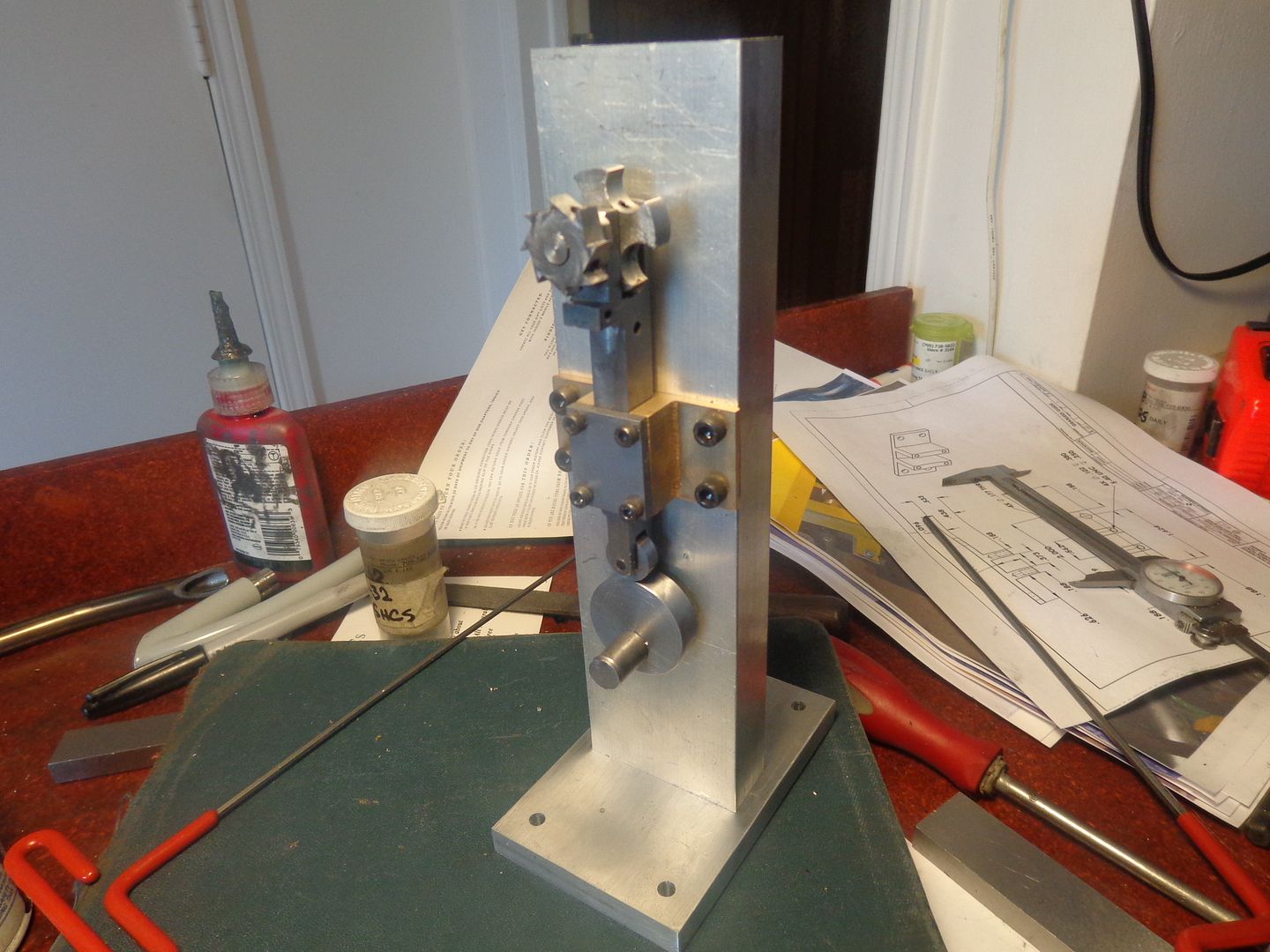I have absolutely no intention of building an engine for this gearless mechanism to go on. That being said, it is such an interesting mechanical device that I'm sure someone will want to build an engine to try it on. BE WARNED---This is not for any kind of high speed engine. This type of device was used on either hit and miss engines or old stationary thumpers that sat all day running about 600 to 750 rpm. I am going to do a "quick and dirty" design of a 1" bore x 1.5" stroke engine to mount it on. This will purely be a "guide" for anybody who may decide to take the design and run with it, and to give me some frame of reference for placement of parts.---Brian
You are using an out of date browser. It may not display this or other websites correctly.
You should upgrade or use an alternative browser.
You should upgrade or use an alternative browser.
Gearless Mechanism--4 stroke i.c. engine
- Thread starter Brian Rupnow
- Start date

Help Support Home Model Engine Machinist Forum:
This site may earn a commission from merchant affiliate
links, including eBay, Amazon, and others.
So----There we have it at about 99%. It ends up at about 10" tall, overall. The more I modeled, the more it began to look like the Philip Duclos engine. There is a good reason for that. Distance from underside of base up to center of crank has to be tall enough to allow for a flywheel. Overall cylinder length is determined by length of piston and stroke. The carburetor/valve body has to be positioned so that it can feed directly into the cylinder head, and the length of the 4 round pillars supporting the cylinder is determined by the minimum amount of room required to fit something like the gearless mechanism into the space between the crankshaft and the stem of the exhaust valve.
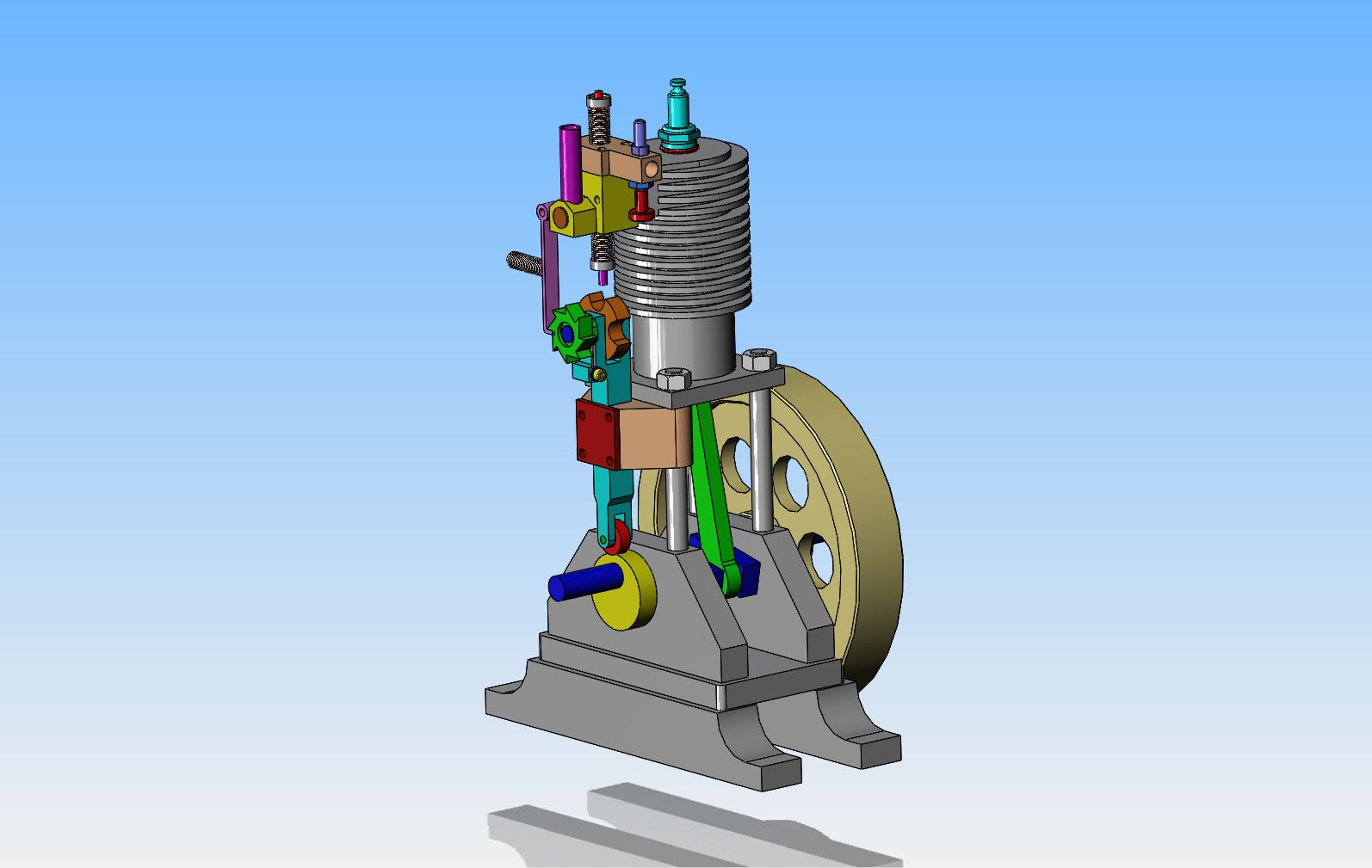

So, here we have it. a single cylinder four stroke engine 1" bore x 1.5" stroke, air cooled, large enough to accommodate the gearless mechanism. Again, as I said, I don't plan on building the engine, only the gearless mechanism. However, I wanted to ascertain that if someone ever actually did want to use it on an engine, it would be possible. It makes a good looking model.
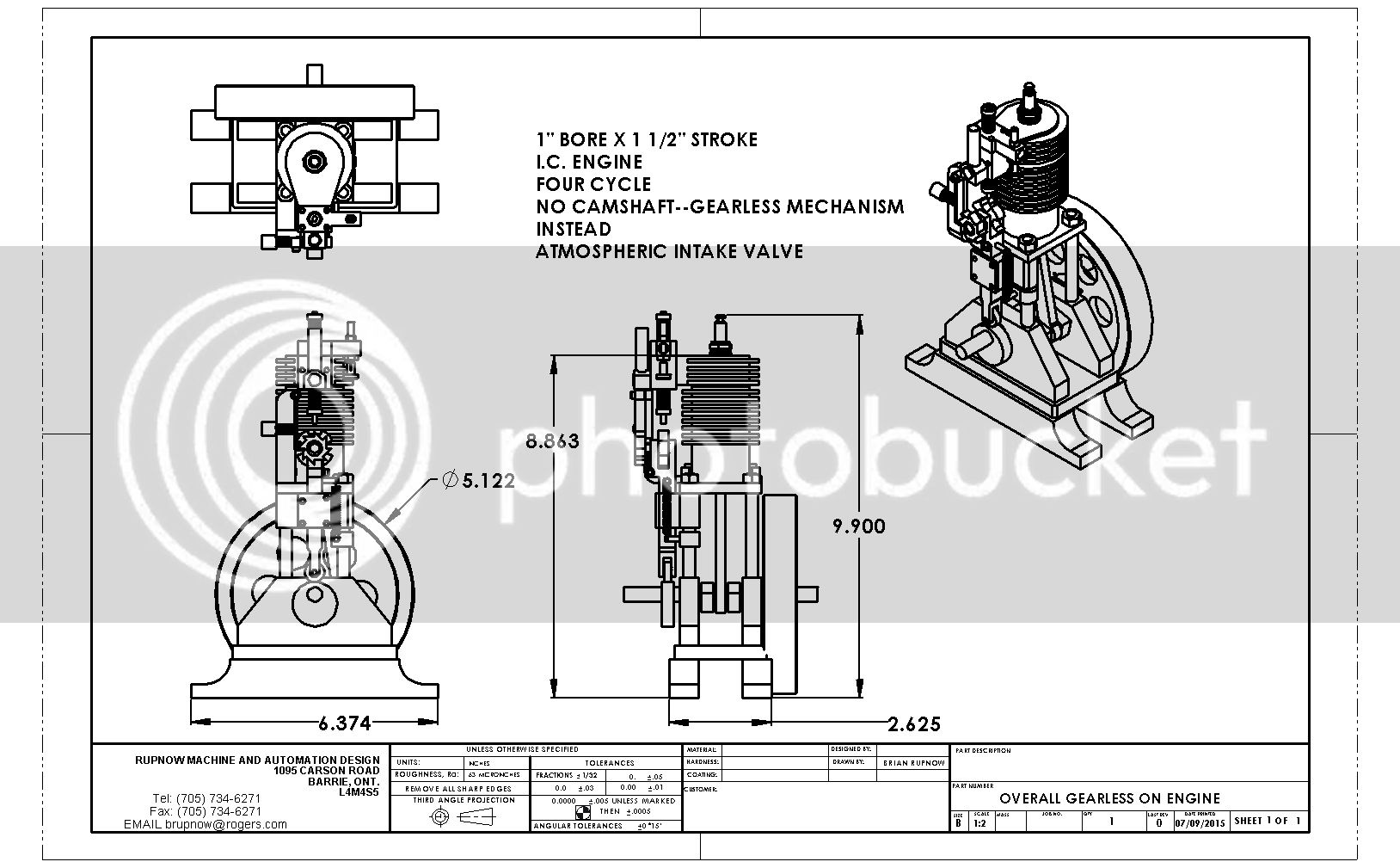

Someone has asked for everything I have done on this project as .stl files. You will need 3D cad software to do anything with these, and remember that nothing is proven here--it is all a "work in progress". I am confident about the gearless mechanism. The engine itself, is as I have said "Quick and dirty" but is sized to work with the gearless mechanism.---Brian
http://www.mediafire.com/download/o1x03gjh59119ak/OVERALL_GEARLESS_ON_ENGINE-X_-1.zip
http://www.mediafire.com/download/o1x03gjh59119ak/OVERALL_GEARLESS_ON_ENGINE-X_-1.zip
Okay kids and turtles!!! Some folks are asking me (I post on three different forums) why I don't build the complete engine.---I don't want to build another engine right now. There is plenty of work involved in building the demonstration model---trust me. The demonstration model will be hand cranked, but it will most definitely show the complete operation of the gearless mechanism. Note that in this model, I haven't shown the springs which hold the gearless mechanism in contact with the cam.---Brian
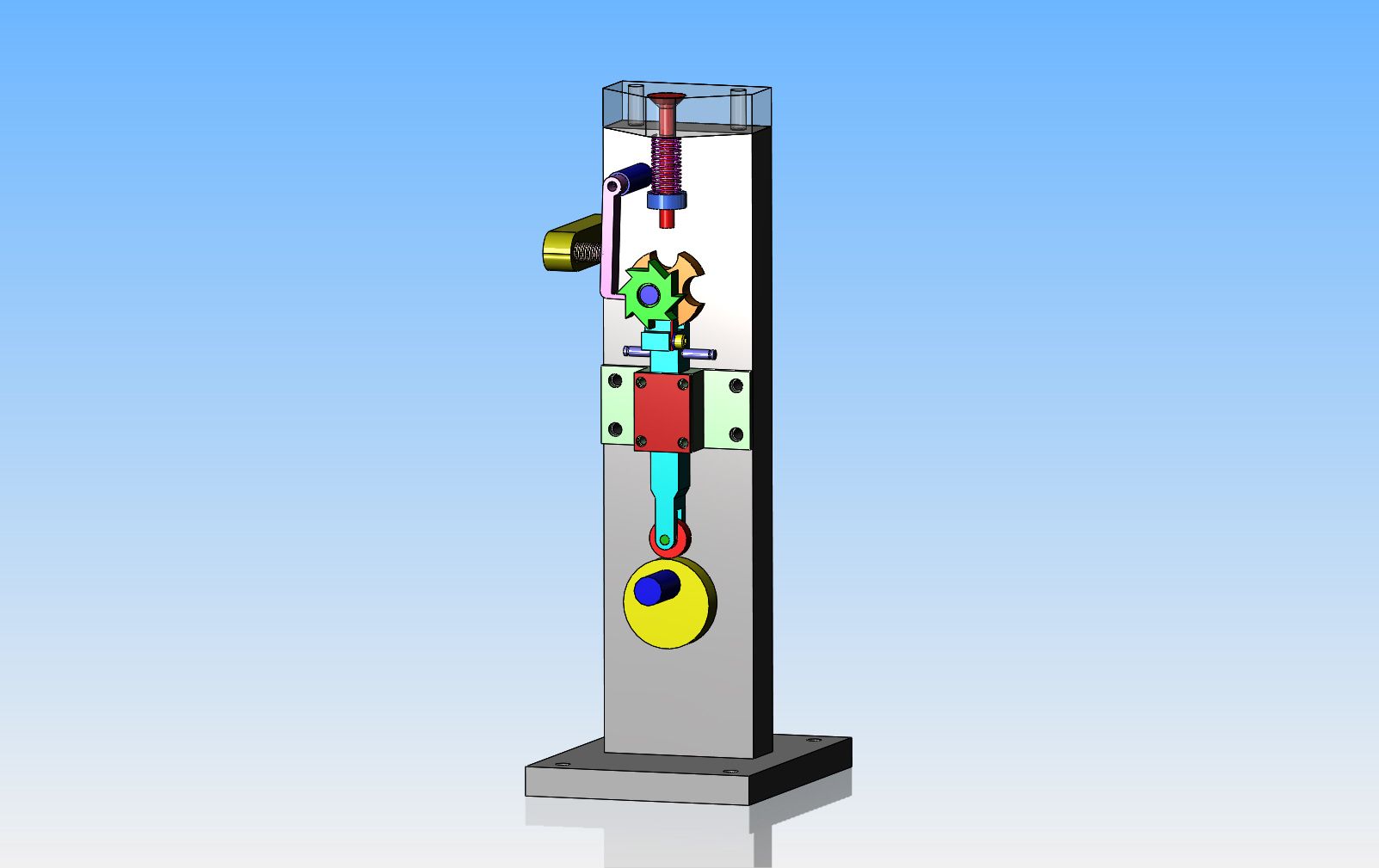

Following my policy of "Never throw anything away---ever!!" I hunted around in a box of junk and recovered a one piece crankshaft I made a few years ago that turned out too crooked to work in an engine----But---it will work fine for a hand cranked demo model. You can see the big strange looking cam setting on one end of the crankshaft.
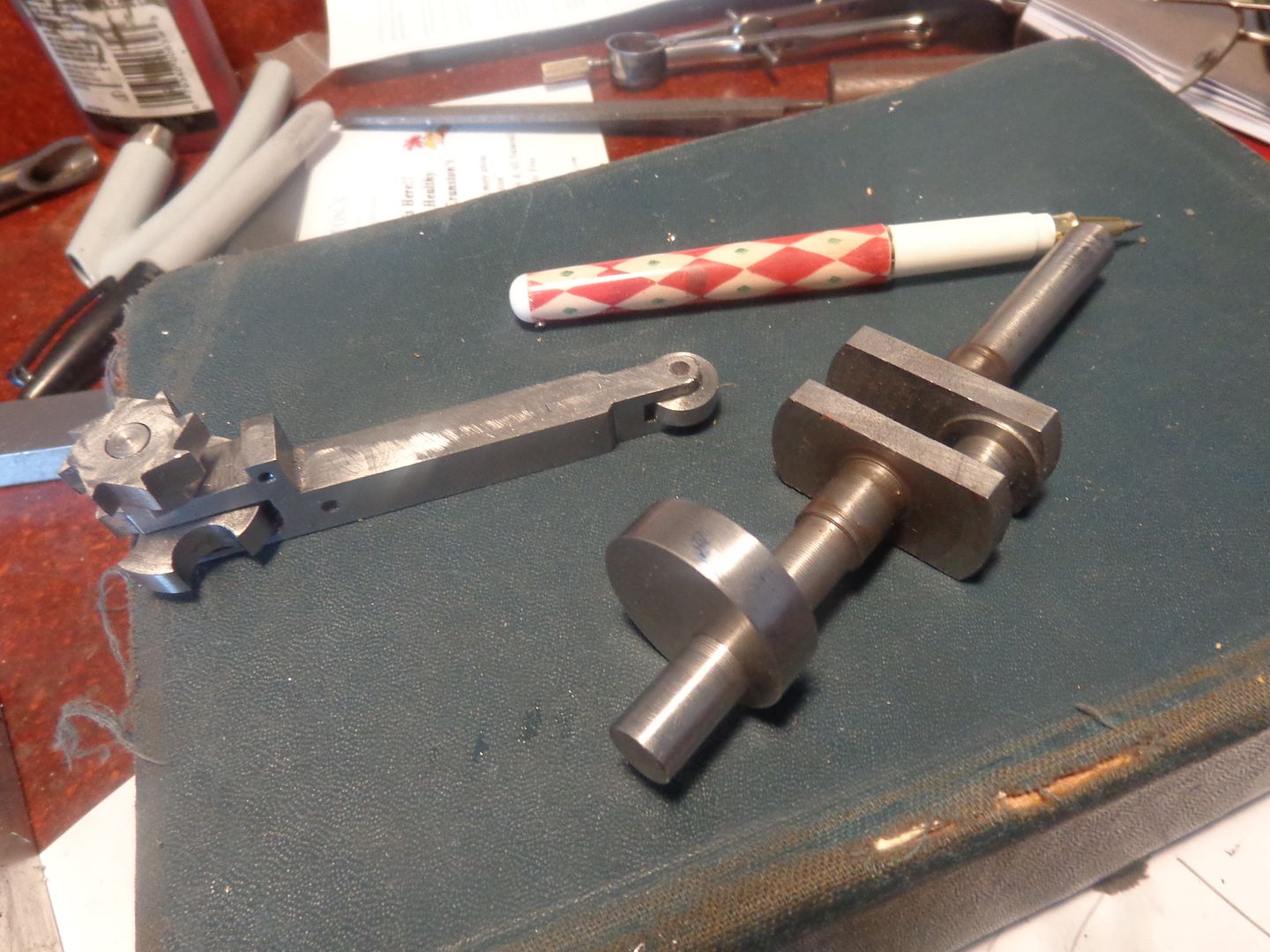

I just had my first "test drive" of this mechanism, and it's awesome!! Even though I know how it works, even through I have watched the video 25 times, it is just "awesome" when it comes to life from parts you have made yourself, from drawings you have made yourself. What a great thrill that even after having done this kind of thing for 50 years, I still get excited when I see one of my creations run. It is not my invention, it is not my intellectual property, and it's all been done before many times by many people---but I still get excited!! Video tomorrow, maybe.
Swifty
Well-Known Member
That mechanism brought back memories of a press tool that was made years ago, as parts were formed and finished, they remained tagged together until the correct number was reached and the "cam" allowed the crop punch to chop the strip off.
Paul.
Paul.
Tomorrow I will make a "valve" to fit into the top plate, complete with valve spring and spring retainer to hold the valve closed. I have arranged things so that I can crank the mechanism by hand, or drive the mechanism very slowly with a belt drive from a power source. I will have to see what works best before I make the video.
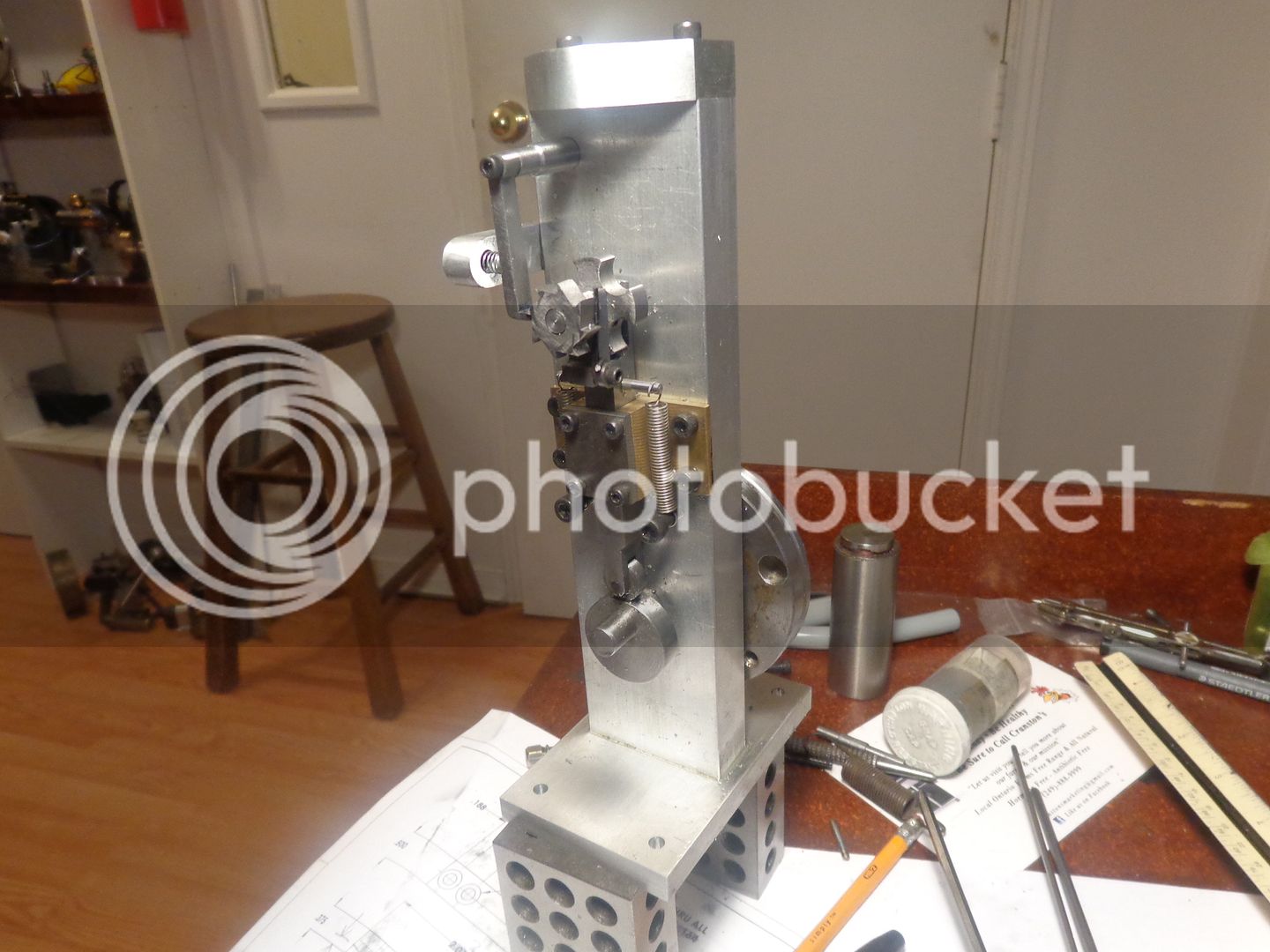

Here ya go fellows!! Hope you enjoy. If you want a set of drawings to build your ow mechanism, email me at [email protected] ----Brian
[ame]https://www.youtube.com/watch?v=HuwlBj3YZMQ[/ame]
[ame]https://www.youtube.com/watch?v=HuwlBj3YZMQ[/ame]
That is kind of like asking me "How high is up!!!" I think probably 500 to 600 RPM but that is only a guess. The type I built depends on a pair of tension springs to hold the gearless mechanism against the cam.--I can visualize a tendency to "float" the entire mechanism if the speed gets too high. The link I posted earlier in this thread shows a video where the mechanism is firmly connected to the cam with a link not unlike a connecting rod. That solves the "float" problem, but makes the engine a lot taller.What do you think the max rpm would be?
Very nice work Brian. Barnbikes you beat me to that question. I would think the rpm would depend on the spring holding the arm for the star wheel and the spring pulling it back down. But I could just see it running in a IC engine. I would be interested also in know how high of RPM's it could run at.
Sent from my iPhone using Model Engines
Sent from my iPhone using Model Engines
Ingenious mechanism built by very clever machinists who love to share with other model makers, and hobbyists.
I too, share your excitement Brian when I view these mechanisms, levers, bell-cranks, etc, all working their individual magic, in perfect concert, doing what they were designed to do. This star-ratchet indexer, the Chuck Fellows two-track cam, and the Wright Bros. gearless mechanism all share that special, "wow factor". Watching them working, never gets old. I guess I still have some kid in me left.
Thanks for another interesting build from the land of Brian R.
Frank
I too, share your excitement Brian when I view these mechanisms, levers, bell-cranks, etc, all working their individual magic, in perfect concert, doing what they were designed to do. This star-ratchet indexer, the Chuck Fellows two-track cam, and the Wright Bros. gearless mechanism all share that special, "wow factor". Watching them working, never gets old. I guess I still have some kid in me left.
Thanks for another interesting build from the land of Brian R.
Frank
Similar threads
- Replies
- 7
- Views
- 5K




